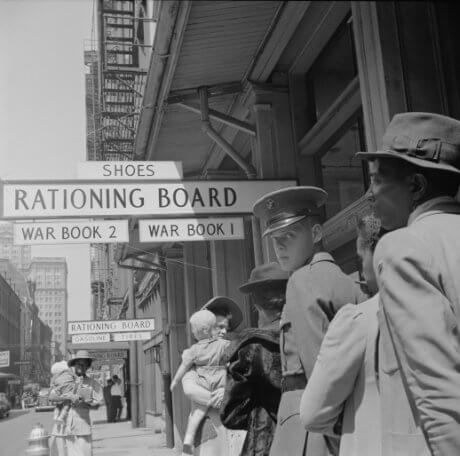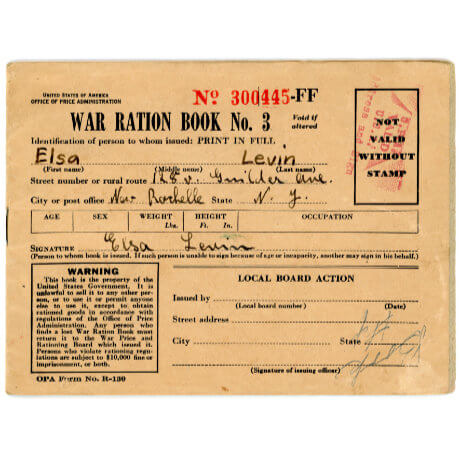This post is part of a larger deep dive
Curious about the role of the USA in WWII and "A Clean, Well-Lighted Place" by Ernest Hemingway in Nighthawks? Check out Nighthawks Explained!
Or read the full Nighthawks article!
This post is part of a larger deep dive
Curious about the role of the USA in WWII and "A Clean, Well-Lighted Place" by Ernest Hemingway in Nighthawks? Check out Nighthawks Explained!
Or read the full Nighthawks article!

In early December 1941, the Japanese military launched a surprise air attack on the United States naval base at Pearl Harbor in Hawaii, which led the USA to declare war on Japan. A few days after, Hitler, together with Mussolini, declared war on the USA. The USA had officially entered the Second World War.
Prior to the strike on Pearl Harbor, Americans were reluctant joining the Allies (which included the UK and the Soviet Union) in the war against Nazi Germany. With the attack on Pearl Harbor the American public opinion changed dramatically in favour of entering the war.
Americans braced themselves to what they believed could be a long and strenuous war and began supporting the war effort in every respect. Naturally, that meant making sacrifices.
For starters, the US federal government set up a system of rationing to limit the purchase of certain goods that were high in demand for use by the military overseas.
For example, in early 1942, the Japanese gained control of the Dutch East Indies and Malaya which, at the time, were two of the largest producer nations of rubber. This created a shortage of the material in the US, which needed rubber to make automobile tires and other products. To encourage people from driving less (thus, preserving tires), gasoline became rationed as well, and even bicycle purchases were restricted.


Of course, the rationing that affected daily life the most was food rationing. Ingredients such as sugar, coffee, butter, canned milk, cheese, cooking oil and meat could only be bought via the system of ration books.
Ration books could be acquired by all citizens every month or so, and contained removable stamps. Shoppers could not buy a rationed item without giving the shop owner the appropriate ration stamp for that item. If you were out of ration stamps for that particular ingredient you could not buy it, even if you paid extra.
Millions of men and women went on to serve the country overseas. Leisure activities also declined substantially as people concentrated their efforts on productivity and, the people that remained in the US worked tended to work for longer hours.
Out of fear of air raid attacks, New York started dimming down the lights and perform blackout drills, especially in public spaces.
This was the general mood at the time Hopper painted Nighthawks.
Masterpiece
Perfect
This is a really good analysis of Hoppers artwork Nighthawks. I would like to know how did you collected so much information like his sketches and the comparisons you make with different components of the artwork. Im trying to make an analysis about Gustave Caillebottes artwork “Couple on a walk” and I don’t know how to begin or where to find information. I please ask for advice and tips. And good work, I was inspired!
Hi Carla,
Thank you for the kind words.
I think the best advice/tip I can give you is that you should diversify the materials you use as much as possible. For Nighthawks I read the Taschen books, online reviews/analysis, forums, and watched YouTube videos. I must have literally read/watched dozens of these analyses before even beginning writing up this article. I must admit though that it did help that Nighthawks is such a popular work, and that so much have already been written about it. Essentially, I just had to compile all this information and condense the relevant parts into an article (with a personal touch of course :D).
To give you some examples, I found out that Hopper was a big fan of Hemingway, and a quick online search revealed that he was particularly fond of the short stories (Wikipedia also mentions it). I then decided to read Hemingway’s short stories and, personally, found Nighthawks to resonate more with “A Clean, Well-Lighted Place”. You also mention Hopper’s sketches. I believe I got the idea from one analysis of Nighthawks I watched, then looked online for his sketches, and concluded that Hopper was indeed very meticulous based on how much of this preparatory work he had produced before he started the painting.
After this initial research, it really comes down to how you want to present the information you’ve collected. That bit is your personal touch, and it is, arguably, the most fun, since you can really unleash your creativity. I like to believe that there is no right or wrong here, so don’t shy away from adding your personal views/interpretations, even if it sometimes feels “overinterpreted”. In my view, readers can always decide which part(s) of your analysis they find appealing even if they don’t necessarily agree with your analysis.
Importantly, you should always try to verify your sources. There is so much information online that it may be difficult sometimes to ensure the information you read is accurate. Ultimately, it’s up to you to decide if a particular source is trustworthy or not, but citing your sources will allow readers to evaluate for themselves their authenticity.
I hope this information helps. If you eventually end up writing up the analysis of “Couple on a walk” do please share the link, I’d be definitely interested in reading it!
Good luck!